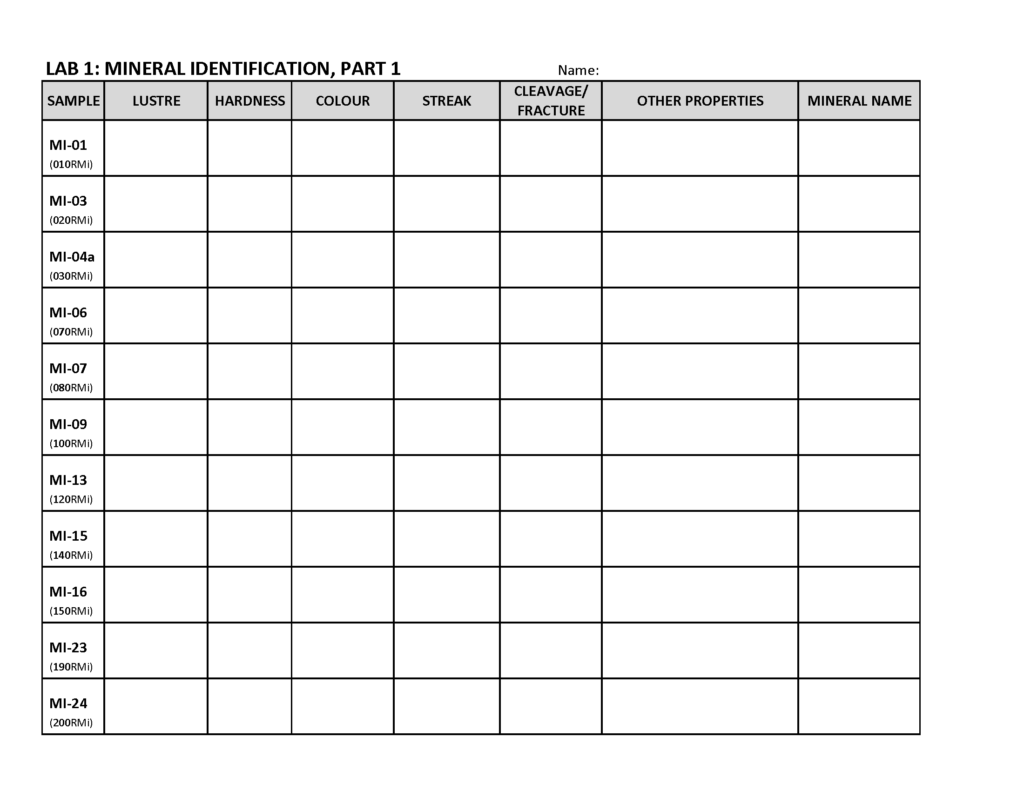Lab 1 Activity
Overview
For Labs 1 and 2, you will identify 22 mineral samples based on observations of their physical properties. The samples include the following minerals:
| Amphibole | Galena | Muscovite | Quartz (Milky) |
| Apatite | Graphite | Olivine | Quartz (Rock Crystal) |
| Biotite | Gypsum | Plagioclase feldspar | Quartz (Rose) |
| Calcite | Halite | Potassium feldspar | Sphalerite |
| Chalcopyrite | Hematite | Pyrite | |
| Fluorite | Magnetite | Pyroxene |
The minerals are divided into two groups, one for each lab. For each of the groups you will receive clues to help guide your detective work.
Samples to Use for Lab 1
Collect the following mineral samples:
| MI-01 | MI-06 | MI-13 | MI-23 |
| MI-03 | MI-07 | MI-15 | MI-24 |
| MI-04a | MI-09 | MI-16 |
Clues
- All but one of the samples have excellent cleavage in one or more directions.
- The sample without cleavage is a good example of crystal form.
- Two of the samples have a metallic or submetallic lustre.
What to Do Next
Use the Lab 1 worksheet (Figure 1.20) to record your observations and guide you through the identification process for each mineral. Refer to Tables 1.2 to 1.4, and/or the Mineral ID Decision Tool in the Reference Tools for Minerals section of this lab manual to help you match your observations with a name.


